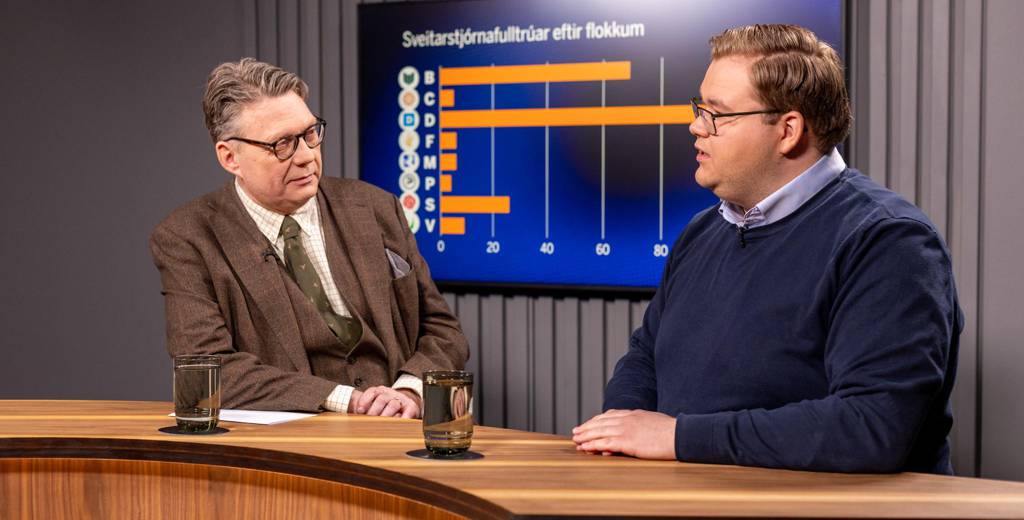« Taxpayers deserve to know what new nuclear power costs »

The new law on financing new nuclear power is based on that investigation as the government ordered. Since nuclear power is significantly more expensive than wind and solar power, state aid is necessary if new nuclear power is to be built, and in short the law means that electricity consumers should be responsible for nuclear costs.
Both researchers and expert authorities have criticized that the proposal has been presented without a proper impact assessment of different ways to meet an increased electricity requirement with high security of supply. Today we present such an analysis, which is based on detailed model analyzes of different development paths for the electrical system – both with and without new nuclear power.
In our analysis We review, among other things, effects on the cost of the electrical system, the impact on electricity price and how new nuclear power affects the profitability of other fossil -free electricity generation.
We would especially like to point out this:
1 Effects on the cost of the electrical system. The government’s bill states that « The effects on the cost of the electrical system are difficult to assess« And that » the cost of network expansion, system operation and flexibility is higher in a future, where electricity production is significantly higher than today, with a wind power -dominated electrical system than in a system where nuclear power has also been expanded « .
According to our calculations, the annual cost to society will be SEK 8-17 billion higher in an electricity system with 6 gigawatts new nuclear power than in a system without new nuclear power. This includes costs for flexibility and consideration of restrictions on the transmission capacity of the transmission network. It should be noted that in our model analysis we have been based on the nuclear power costs specified in the financing investigation, which are significantly lower than for current projects in Europe.
Our hope is that our analysis can contribute to a better understanding of what different things actually cost
The analysis shows The fact that an electrical system without new nuclear power certainly requires greater investments in battery capacity and gas turbines to manage the most extreme weather situations, the need for rapid supplements of active power in disturbances and rapid changes in weather -dependent electricity generation. The costs for this amount to just under SEK 900 million per year. In addition, costs for maintaining the electricity grid’s ability to handle voltage variations and reactive effect. This can be done with known technology and entails costs in the order of SEK 100–200 million per year.
All in all, 6 gigawatt new nuclear power thus entails an additional cost for society of approximately SEK 7-15 billion per year (the government’s proposal for funding refers to 5 gigawatts nuclear power, which would correspond to approximately SEK 6-13 billion in increased annual costs).
In an unfortunate way, the government’s documentation mixes large and small cost effects of new nuclear power. Our hope is that our analysis can contribute to a better understanding of what different things actually cost.
2 Impact on electricity price. The government’s bill states that « it is difficult to determine the long -term effect of new nuclear power on electricity prices » but that « new nuclear power gives lower price vollatility ».
Our calculations show that an investment in new nuclear power in the short term means clearly higher electricity prices due to missing investments, especially in wind power. When nuclear power is commissioned, a ten-year period follows with slightly lower average prices due to a temporary excess of electricity generation. About ten years after new nuclear power has come into place, electricity prices are at about the same level as in the scenarios without new nuclear power, since the surplus of electricity generation is then eliminated through continued missing investments in wind power.
Our analyzes also show that we receive volatile electricity prices, regardless of whether we are expanding new nuclear power or not, as Sweden is an integral part of the electricity system in Northern Europe where wind and solar power will continue to be expanded as these power types have the lowest costs.
Our calculations show that an investment in new nuclear power is reducing investments in wind power in Sweden
3 The profitability of other electricity generation techniques. The government’s bill states that « the overall effect on the profitability of wind power » is « unclear » while assessing the risk of « suppressing life extensions of existing nuclear power as a small person ».
Our calculations show that an investment in new nuclear power reduces investments in wind power in Sweden. New nuclear power also significantly reduces revenue for hydropower and existing nuclear power. Lifetime extension of existing nuclear power will not be profitable with 6 gigawatts new nuclear power in the electrical system.
Our report shows that the additional cost of new nuclear power for society can be somewhat reduced if the new nuclear power comes into place first in connection with the retire of existing nuclear power. It would also reduce the subsidized nuclear power’s displacement effects on other types of power and make it possible to count home a lifetime extension of the existing nuclear power.
It should also be noted that the scenarios without new nuclear power mean a net export of about 10 terawatt hours per year. In the case of new nuclear power, the expansion of wind and solar power is slowed down, which means that Sweden imports about 10 terawatt hours per year until nuclear power has arrived.
The government’s unilateral focus on subsidizing nuclear power is therefore very unfortunate
As a researcher If we do not take a stand for or receive individual types of power, but we think that taxpayers deserve a clear and unconditional impact assessment of different ways to meet the future electricity requirement. The government’s one -sided focus on subsidizing nuclear power is therefore very unfortunate. Especially as Sweden has particularly favorable conditions for renewable electricity generation, with the opportunity to offer Swedish industry electricity at competitive prices.
There are no challenges for the development of the electrical system, but these are rather clarity in climate policy, acceptance issues and to ensure a politically stable investment climate for all types of power.







